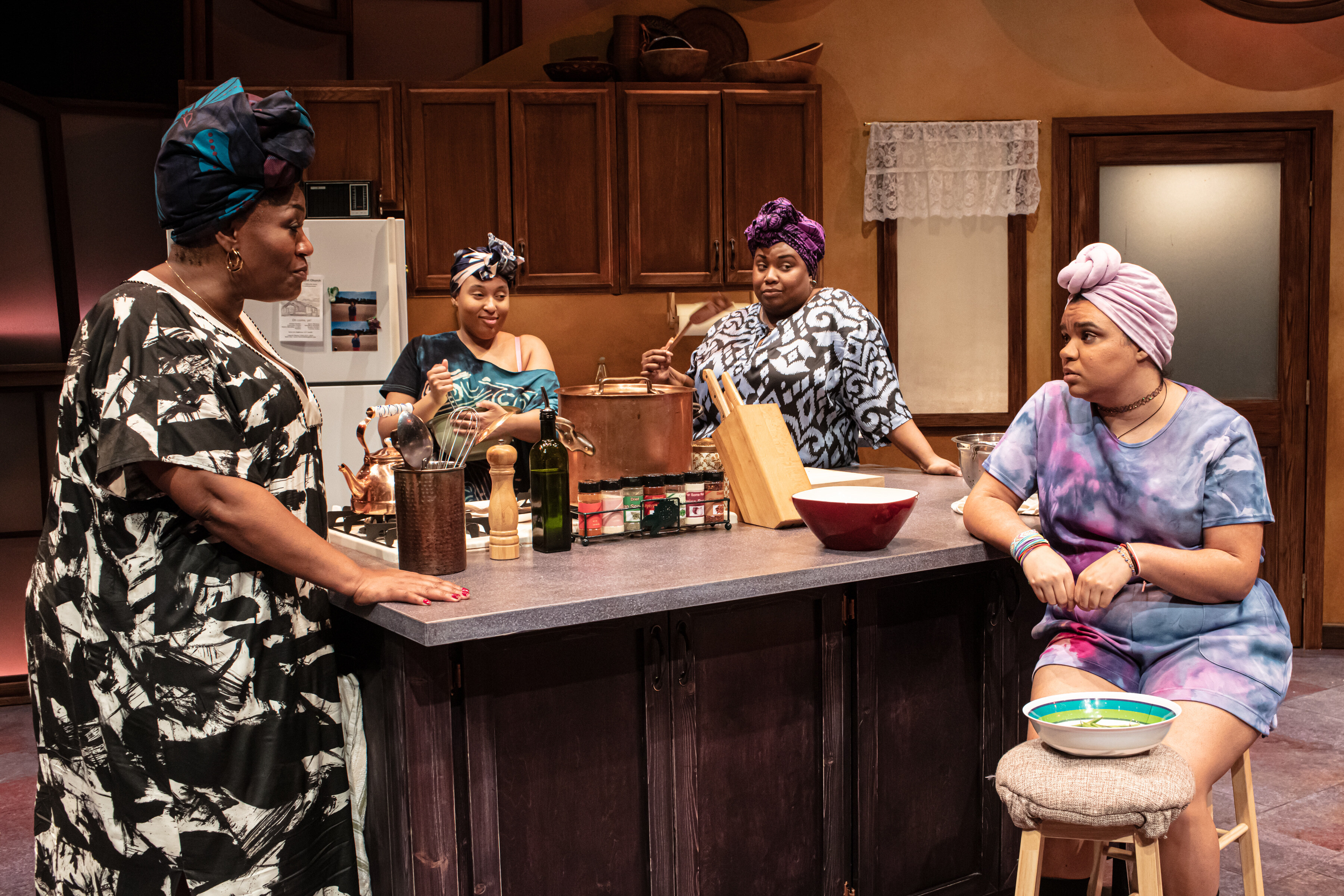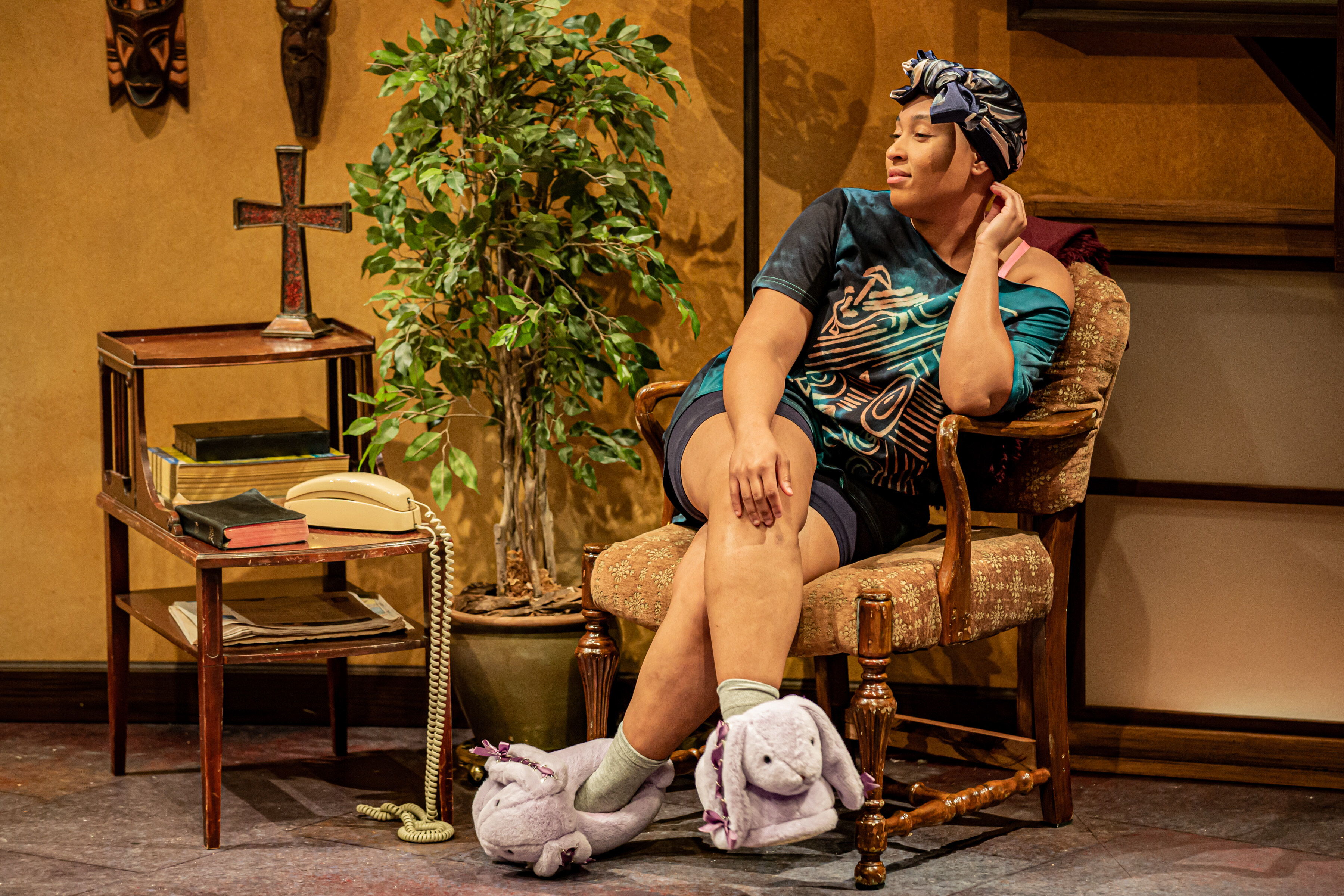STEW for the Soul
A review of STEW at ACT Theater
Written by TeenTix Newsroom Writer Raika Roy Choudhury and edited by Teen Editorial Staff Member Audrey Gray

STEW at the ACT is a truly contemporary performance that explores the hefty concepts of family, guilt, and maturity. Centering on an intergenerational female household, the play relays the importance of breaking generational trauma through visual and aural cues. The narrative opens by introducing the family’s matriarch, Mama. Soon after, in a chaotic fashion, the rest of the family is introduced: Mama’s daughters Lillian, and teenage Nelly, and Lil’ Mama, Lillian’s daughter. At first, It was difficult to understand their relationships, but it became clear by the second act. The family is deeply interconnected, and each family member’s life parallels those from earlier generations. For example, Mama had Lillian at 17 and Lillian also had Lil’ Mama at 17. The other parallels are revealed at tense points throughout the performance, and the newer generations’ drive to break the often unfair norm created by their previous generation serves as a turning point for each character.
The story revolves around Mama making a large batch of stew. Stew brings the whole family together—even though Lillian and Lil’ Mama live elsewhere, they visit Mama to help her make and eat the stew. Stew serves as a symbol of hope and togetherness, and the progress of cooking the stew throughout the play reflects the mood of the story.

The show also explored how the different generations of characters interacted with the cultural traditions of the cooking they shared. Mama had a stereotypical relationship with cooking; she was always the primary chef and relied on food for connection. Lillian and Nelly also saw cooking as important, a way for a woman to take care of their family. However, Lil’ Mama viewed cooking differently—she questioned why she was expected to learn it, challenging the gender stereotypes she encountered daily. She even used Mama’s apron as a cape, to costume herself for her true passion of acting. It was fascinating how the plot device of the apron, symbolizing duty, was manipulated to communicate the generational gap between Lil’ Mama and Mama.
STEW also explored a theme of maturity with Nelly. Despite acting and wanting to be grown up, Nelly dons comically large bunny slippers with her pajamas the entire play. Her bunny slippers, clearly meant to be childish, subtly juxtaposed her wannabe-mature attitude to reveal the facade she was putting on. Mama even continues this contrast through dialogue paralleling Nelly and the stew thematically, saying that the stew tasting good didn’t mean it was ‘ready.’

With the introduction of these complex relationships, STEW had an excellent foundation, and great potential to tie its many themes into one impactful narrative. However, as it progresses, the story struggles to conclude plotlines, falling short of a satisfying resolution. Especially without an intermission, I found it difficult to process and stay intrigued by the detail-packed performance as it neared the end. The main cast did an incredible job portraying their characters and expressing the raw emotion required by their roles. However, their acting would’ve been easier to appreciate if the audience was allowed to process it.
In terms of acting, the household excellently exhibited a classic family dynamic. Whether because of the overlapping conversing voices, typical angsty teenager-parent interactions, or out-of-pocket insults and jokes, I truly felt like I understood the family. The set and its warm lighting simply added to that vibe. Two staircases, meant to be used to access backstage, ran through the audience and were also utilized well in the story. These staircases, paired with the diagonal orientation of the set’s living room and kitchen, opened the home to the audience, making us an extension of the home itself. Scents of cooking even wafted through the theater to make us feel like we were part of the dinner party. More than in any other theater performance, I felt immersed in the world of the story.
Overall, STEW had an impeccable visual presentation, only flawed by a dense script. Its seamless mesh of visual elements and script choices sold its mood to the audience, making it a compelling sensory experience. Even with consistent performances from the actors, this strength wasn’t carried through to the rest of the play in the show’s attempts to relay complex messaging in a short period.
Lead Photo Credit: Shaunyce Omar and Shermona Mitchell in Stew, photo courtesy of Rosemary Dai Ross
The TeenTix Newsroom is a group of teen writers led by the Teen Editorial Staff. For each review, Newsroom writers work individually with a teen editor to polish their writing for publication. The Teen Editorial Staff is made up of 5 teens who curate the review portion of the TeenTix blog. More information about the Teen Editorial Staff can be found HERE.
The TeenTix Press Corps promotes critical thinking, communication, and information literacy through criticism and journalism practice for teens. For more information about the Press Corps program see HERE.

